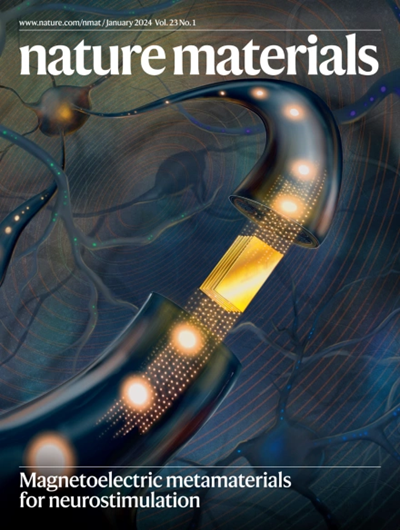稳定定向蒸发宽禁带钙钛矿太阳能电池的中间相演化。
IF 38.5
1区 材料科学
Q1 CHEMISTRY, PHYSICAL
引用次数: 0
摘要
高效的宽禁带钙钛矿太阳能电池将串联效率提高到34.9%,加强了下一代光伏电池的前景。然而,它们的商业应用受到宽带隙钙钛矿稳定性问题的阻碍,特别是在高温最大功率点跟踪条件下。在这里,我们报道了~1.7 ev宽带隙钙钛矿通过中间相演化的稳定性,实现了自导向晶体生长模式。沉积初期形成CsI2Br中间相,引导多晶膜定向生长,具有独特的织构。原子尺度扫描透射电子显微镜显示,CsI2Br(12¯3)面与钙钛矿(200)面相匹配,面间距为2.9-Å,引导相干{100}生长。这导致结晶度增强,(100)衍射强度增加了2个数量级,半宽从0.249°减少到0.148°,与溶液处理的薄膜相比。由此产生的太阳能电池表现出出色的热稳定性和工作稳定性,在室温下保持最大功率点跟踪性能超过3,000小时,在110°C下保持超过500小时,预计寿命约为70,000小时。凭借21.37%的功率转换效率和84%的填充系数,这项工作为稳定、高效的串联光伏发电提供了一条引人注目的途径。本文章由计算机程序翻译,如有差异,请以英文原文为准。
Intermediate phase evolution for stable and oriented evaporated wide-bandgap perovskite solar cells.
Efficient wide-bandgap perovskite solar cells have pushed tandem efficiencies to 34.9%, reinforcing their promise for next-generation photovoltaics. However, their commercial adoption is hindered by stability issues of wide-bandgap perovskites, especially under high-temperature maximum power point tracking conditions. Here we report the stabilization of ~1.7-eV wide-bandgap perovskites via intermediate phase evolution, enabling a self-guided crystal-growth mode. A CsI2Br intermediate phase forms during early stage deposition, directing the oriented growth of polycrystalline films with unique texturing. Atomic-scale scanning transmission electron microscopy reveals that the CsI2Br ( 1 2 ¯ 3 ) facet, with a 2.9-Å interplanar spacing, matches the perovskite (200) facet, guiding coherent {100} growth. This results in enhanced crystallinity, with a 2-order-magnitude increase in the (100) diffraction intensity and a reduced full-width at half-maximum from 0.249° to 0.148°, compared with solution-processed films. The resulting solar cells exhibit outstanding thermal and operational stability, maintaining performance under maximum power point tracking for over 3,000 h at room temperature and over 500 h at 110 °C, with a projected lifetime of ~70,000 h. With 21.37% power conversion efficiency and >84% fill factor, this work presents a compelling route towards stable, high-efficiency tandem photovoltaics.
求助全文
通过发布文献求助,成功后即可免费获取论文全文。
去求助
来源期刊

Nature Materials
工程技术-材料科学:综合
CiteScore
62.20
自引率
0.70%
发文量
221
审稿时长
3.2 months
期刊介绍:
Nature Materials is a monthly multi-disciplinary journal aimed at bringing together cutting-edge research across the entire spectrum of materials science and engineering. It covers all applied and fundamental aspects of the synthesis/processing, structure/composition, properties, and performance of materials. The journal recognizes that materials research has an increasing impact on classical disciplines such as physics, chemistry, and biology.
Additionally, Nature Materials provides a forum for the development of a common identity among materials scientists and encourages interdisciplinary collaboration. It takes an integrated and balanced approach to all areas of materials research, fostering the exchange of ideas between scientists involved in different disciplines.
Nature Materials is an invaluable resource for scientists in academia and industry who are active in discovering and developing materials and materials-related concepts. It offers engaging and informative papers of exceptional significance and quality, with the aim of influencing the development of society in the future.
 求助内容:
求助内容: 应助结果提醒方式:
应助结果提醒方式:


